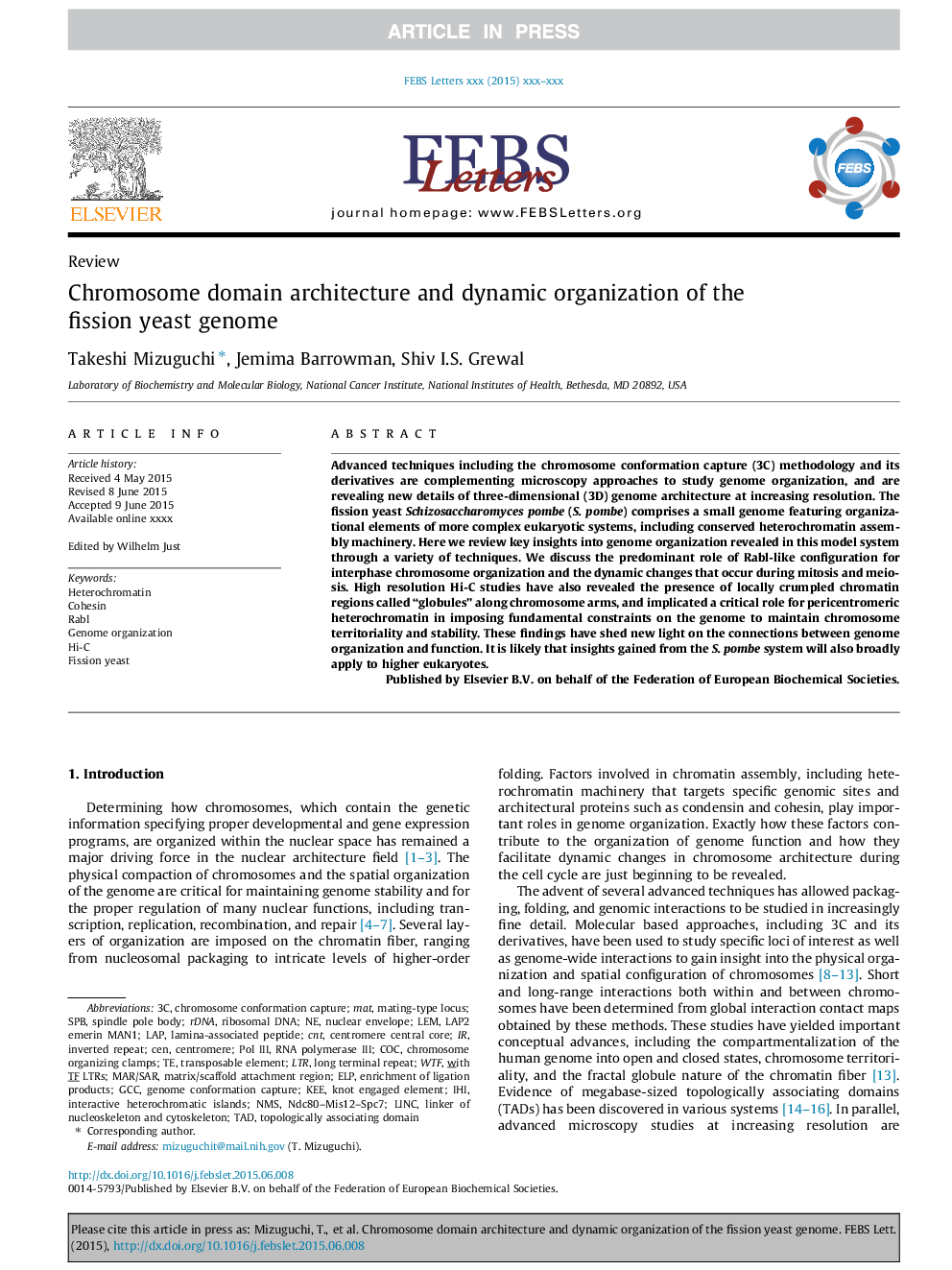| Article ID | Journal | Published Year | Pages | File Type |
|---|---|---|---|---|
| 10869855 | FEBS Letters | 2015 | 12 Pages |
Abstract
Advanced techniques including the chromosome conformation capture (3C) methodology and its derivatives are complementing microscopy approaches to study genome organization, and are revealing new details of three-dimensional (3D) genome architecture at increasing resolution. The fission yeast Schizosaccharomyces pombe (S. pombe) comprises a small genome featuring organizational elements of more complex eukaryotic systems, including conserved heterochromatin assembly machinery. Here we review key insights into genome organization revealed in this model system through a variety of techniques. We discuss the predominant role of Rabl-like configuration for interphase chromosome organization and the dynamic changes that occur during mitosis and meiosis. High resolution Hi-C studies have also revealed the presence of locally crumpled chromatin regions called “globules” along chromosome arms, and implicated a critical role for pericentromeric heterochromatin in imposing fundamental constraints on the genome to maintain chromosome territoriality and stability. These findings have shed new light on the connections between genome organization and function. It is likely that insights gained from the S. pombe system will also broadly apply to higher eukaryotes.
Keywords
CNTLINCWTFCentromerecohesinLTRGCCSPBIHILAPRDNACOCNMSCENELPRibosomal DNARNA polymerase IIITopologically associating domainSpindle pole bodyTADLong terminal repeatinverted repeatGenome organizationHi-Cchromosome conformation captureTransposable elementLemlinker of nucleoskeleton and cytoskeletonMatFission yeastMating-type locusHeterochromatinnuclear envelopePol III
Related Topics
Life Sciences
Agricultural and Biological Sciences
Plant Science
Authors
Takeshi Mizuguchi, Jemima Barrowman, Shiv I.S. Grewal,
